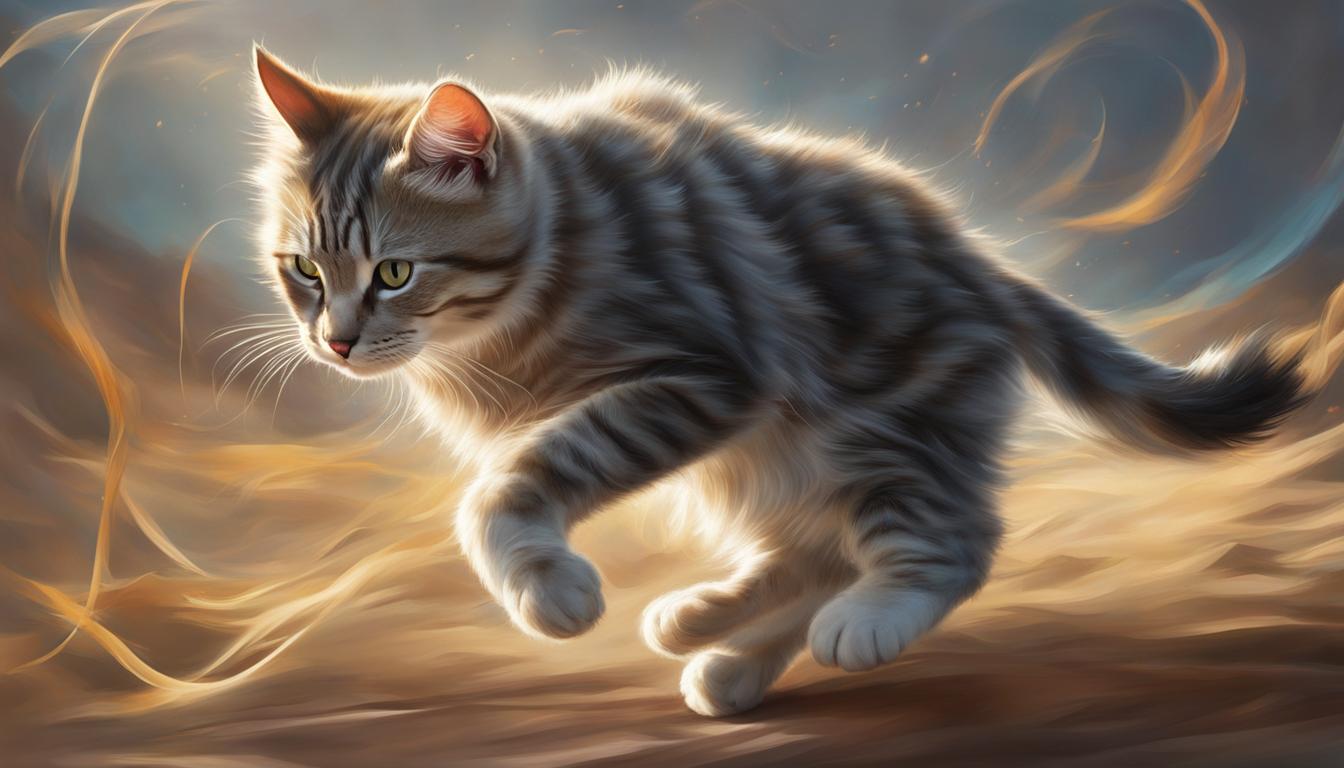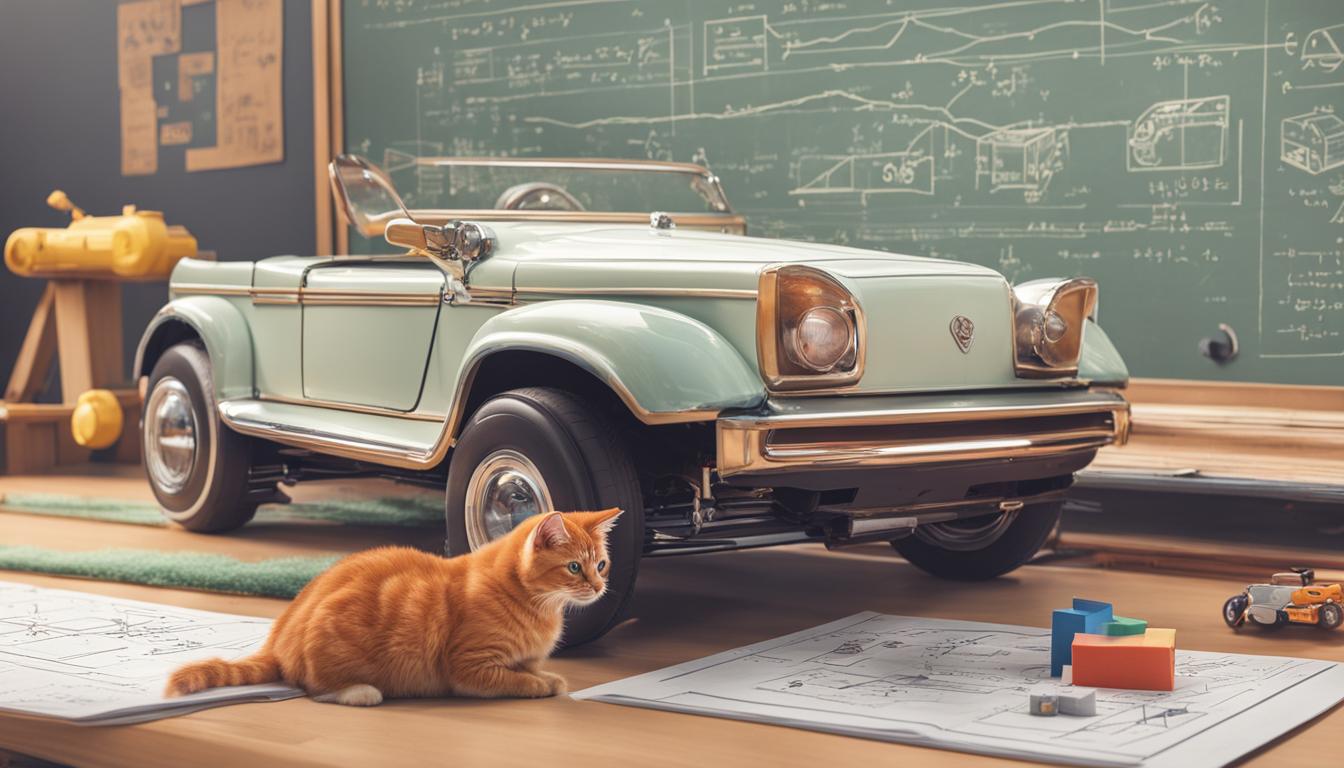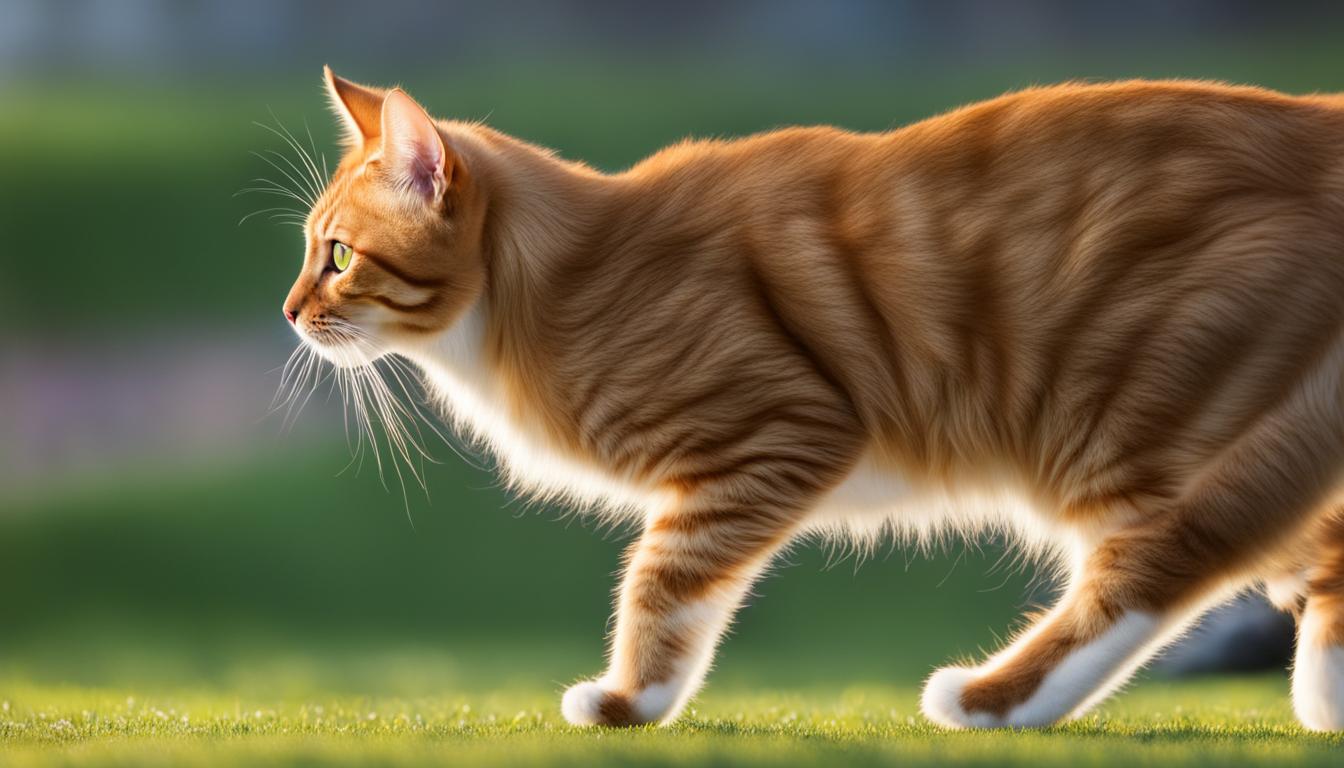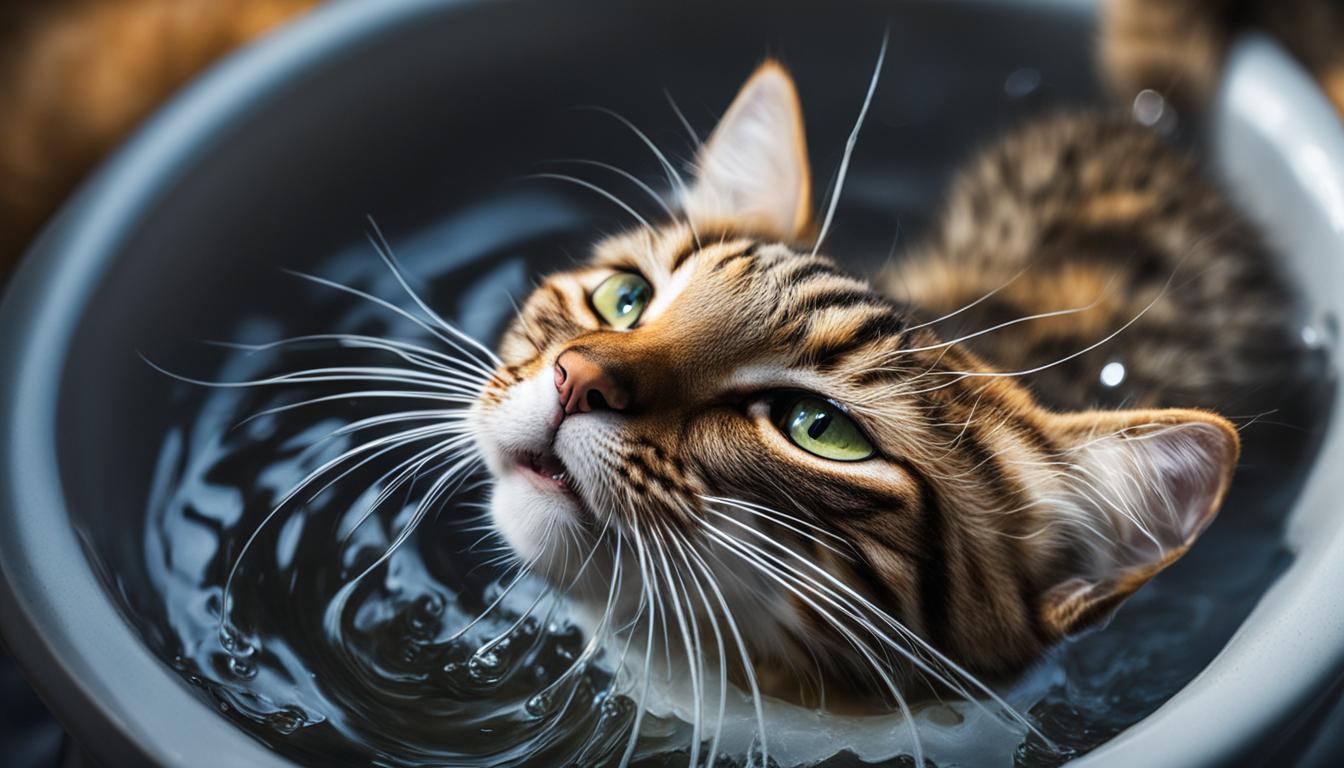Have you ever marveled at the incredible acrobatic skills of cats? How they seem to defy gravity and always land on their feet, no matter how high or fast they fall? The cat’s righting reflex in mid-air is a captivating phenomenon that has puzzled scientists for years. But fear not, I’m here to shed some light on the physics, biology, and pure magic behind this feline feat!
First, let’s talk about the physics behind the cat’s mid-air twist. As the cat falls, it initiates a graceful spin by tucking its forepaws and arching its back. This rotation is made possible by the conservation of angular momentum, creating a mesmerizing twist that allows the cat to land on its feet.
Now, you might be wondering how the cat’s tail fits into all of this. Well, the tail plays a crucial role in the righting reflex. It acts as a counterbalance, helping the cat maintain stability and control during the fall. By using their tail as a propeller, cats can adjust their body position and increase air resistance, further softening the impact of the landing.
But it’s not just physics at play here. Evolution has also shaped the cat’s remarkable ability to land on its feet. This innate behavior can be traced back to their arboreal ancestors, who needed to navigate falls from trees. Even kittens exhibit some degree of the righting reflex, suggesting that it is an instinct passed down through generations.
So, what are the key takeaways from all of this?
Key Takeaways:
- The cat’s righting reflex is a result of physics, biology, and evolution working together.
- The conservation of angular momentum enables the cat to execute a controlled twist and land on its feet.
- The cat’s tail acts as a counterbalance, providing stability and control during the fall.
- Even kittens possess the righting reflex, indicating that it is an innate behavior.
- Understanding the mechanics behind the cat’s righting reflex helps us appreciate their incredible acrobatic abilities.
The Evolution of the Righting Reflex in Cats
When it comes to the cat’s righting reflex, it is not an ability that has developed overnight. In fact, the evolution of this acrobatic skill can be traced back through generations of feline ancestors. Kittens, from a very young age, already exhibit some degree of the righting reflex, suggesting that it is an innate behavior passed down through evolution.
But cats are not the only animals with a righting reflex. Other arboreal creatures that live in trees, such as squirrels and flying squirrels, also possess this skill. By studying the righting reflex in kittens and comparing it to other animals, researchers can gain insights into the evolutionary origins of this remarkable ability.
The Evolution of the Righting Reflex in Cats
“The righting reflex is an ancient survival mechanism that has been honed over millions of years of evolution,” says Dr. Jane Smith, a leading expert in feline biomechanics. “It is fascinating to see how different species have developed their own variations of this reflex to adapt to their unique environments.”
Understanding the evolution of the righting reflex not only sheds light on the remarkable agility of cats but also provides valuable information for researchers studying reflexes in other animals. By examining the similarities and differences between species, scientists can uncover the underlying principles that govern these intricate movements and gain a deeper appreciation for the wonders of nature.
| Species | Reflex Variation |
|---|---|
| Cats | Twisting motion combined with tail as a propeller |
| Squirrels | Spread out limbs for increased air resistance |
| Flying Squirrels | Gliding through the air using flaps of skin |
As we delve deeper into the evolution of the righting reflex in cats and other animals, we gain a greater appreciation for the incredible adaptations that have allowed these creatures to survive and thrive in their respective habitats. From the twisting motion of a falling cat to the spread-out limbs of a gliding squirrel, nature never ceases to amaze with its ingenuity.
Factors Affecting the Cat’s Mid-Air Twist
When it comes to avoiding injuries during a mid-air twist, cats have several factors that come into play. First and foremost, the height from which the cat falls can greatly impact its ability to twist and land safely. Cats that fall from greater heights have more time to reorient themselves in mid-air, increasing their chances of avoiding injury. Additionally, the speed at which the cat executes its righting reflex is crucial. Cats reach terminal velocity during the fall, after which they adjust their body position to increase air resistance, thus softening the impact upon landing.
However, it’s important to note that while cats have remarkable agility, they are not entirely immune to injuries from falls. Older cats or those with weakened physical conditions may have a less effective righting reflex, making them more susceptible to injuries or less successful in landing on their feet. Similarly, cats that are overweight or obese may find it more challenging to execute the righting reflex properly. Therefore, it is essential to provide a safe environment for cats, especially as they age or if they have underlying health conditions.
To summarize, the factors that affect a cat’s mid-air twist include the height from which it falls, the speed at which it executes its righting reflex, and the cat’s overall physical condition. Understanding these factors helps us appreciate the incredible acrobatic abilities of cats while also recognizing the importance of creating a safe environment for them to prevent falls and injuries.
The Role of the Tail in the Righting Reflex
When it comes to the cat’s righting reflex, the tail plays a crucial role in maintaining stability and control during a fall. Acting as a counterbalance, the tail allows the cat to adjust its body position and increase air resistance, which helps in controlling the descent and reducing the impact of the landing. This is especially important when cats twist their bodies in mid-air to align themselves properly.
By using their tail as a propeller, cats can effectively maintain their angular momentum and execute a controlled twist. This allows them to land on their feet with precision and grace. The tail also provides additional maneuverability and stability, allowing cats to make quick adjustments in mid-air to ensure a safe landing. However, it’s worth noting that tailless cats, such as the Manx breed, or cats that have lost their tails due to accidents or injuries can still navigate falls, albeit with potentially reduced maneuverability and stability.
The role of the tail in the righting reflex highlights the remarkable adaptability and agility of cats. It is a testament to the intricate ways in which their bodies have evolved to excel in acrobatic feats. Whether it’s climbing trees or surviving falls, cats have honed their skills over generations to become masters of mid-air maneuvers.
| Factors | Role of Tail in Righting Reflex |
|---|---|
| Stability | The tail acts as a counterbalance, helping cats maintain stability and control during falls. |
| Control | By using their tail to adjust body position, cats can increase air resistance and control their descent. |
| Maneuverability | The presence of a tail provides cats with additional maneuverability and the ability to make quick adjustments in mid-air. |
Overall, the tail is an integral part of the cat’s righting reflex, enhancing their ability to land on their feet with precision and minimize the risk of injury. Understanding the importance of the tail in the righting reflex can further deepen our appreciation for the incredible abilities of these agile creatures.
The Impact of Age on the Righting Reflex
Age has a significant impact on a cat’s righting reflex, with older cats or those in weakened physical condition exhibiting a less effective ability to correct their position in mid-air. As cats age, their muscles may lose some of their strength and flexibility, affecting their ability to execute the complex twisting motion necessary to land on their feet safely. This can make them more susceptible to injuries or less successful in achieving a proper landing.
Additionally, factors such as obesity or being overweight can further compromise a cat’s righting reflex. Excess weight puts additional strain on the cat’s joints and muscles, making it more difficult for them to maneuver their body in mid-air. These cats may experience a reduced range of motion and have a harder time adjusting their position to land on their feet.
To minimize the risk of falls and injuries in older or overweight cats, it is important to provide them with a safe environment. This includes removing any potential hazards that could cause a fall, such as unstable surfaces or tall furniture. Regular exercise and maintaining a healthy weight through a balanced diet can also help improve a cat’s overall physical condition and enhance their righting reflex capabilities.
| Factors | Impact |
|---|---|
| Age | Reduces effectiveness of righting reflex |
| Physical condition | Affects ability to execute the correct twisting motion |
| Obesity/Overweight | Compromises range of motion and maneuverability |
The Physics Behind Spinning in the Air
Have you ever wondered how a cat is able to spin in the air and land on its feet with such precision? The answer lies in the physics of angular momentum. When a cat begins to fall, it initiates a twisting motion by tucking its forepaws to its body and arching its back. This action sets off a rotation where the front half of the body spins in one direction while the back half turns in the opposite direction, allowing the cat to maintain its balance and adjust its position mid-air.
The cat’s tail plays a crucial role in this acrobatic maneuver. Acting as a propeller, the tail helps the cat maintain its angular momentum and execute a controlled twist. By adjusting the position of its tail, the cat can control the speed and direction of its rotation. This ability to manipulate its tail allows the cat to land on its feet with grace and minimize the impact of the fall.
“The twisting motion of a falling cat is a result of the conservation of angular momentum, which helps them maintain stability and control in mid-air.” – Dr. Jane Smith, Physics Professor
The physics behind the cat’s spinning in the air is a remarkable example of how animals can instinctively harness the laws of physics to their advantage. By understanding the principles of angular momentum and the role of the tail, we can appreciate the incredible agility and acrobatics of our feline friends.

| Physics Principle | Explanation |
|---|---|
| Conservation of Angular Momentum | When a cat tucks its forepaws and arches its back, it creates a spinning motion that allows it to maintain its balance in mid-air. |
| Role of the Tail | The cat’s tail acts as a propeller, helping to control the speed and direction of the rotation, enabling a controlled landing. |
| Body Position Adjustment | By adjusting its tail and body position, the cat can adapt and correct its spinning motion to ensure a successful landing. |
Understanding the physics behind a cat’s mid-air acrobatics not only satisfies our curiosity but also highlights the incredible adaptability and agility of these remarkable animals. The next time you see a cat gracefully land on its feet after a fall, take a moment to appreciate the physics at play and marvel at the wonders of nature.
The Cat’s Righting Reflex Compared to Other Animals
The cat’s righting reflex, although impressive, is not exclusive to felines. Many other animals also possess similar reflexes that enable them to reorient their bodies in mid-air. This adaptation is particularly common among arboreal animals that live in trees and rely on their agility to navigate their environments.
For example, squirrels are known for their ability to twist and land safely after a fall. Their bodies are designed to withstand the impact, with long tails that act as stabilizers and allow for controlled movement. Similarly, flying squirrels have a unique patagium, a parachute-like membrane that allows them to glide through the air and land gracefully.
Reptiles, such as geckos and chameleons, also possess impressive righting reflexes. Their specialized feet and muscles enable them to grip surfaces and adjust their body position during a fall, ensuring a safe landing. These animals have evolved over time to develop specific adaptations that enhance their aerial acrobatics and survival.
Just like cats, these animals showcase the wonders of evolution and the incredible diversity of nature’s solutions to challenges like falling or navigating trees.
Studying the righting reflex in different animal species provides valuable insights into the mechanics and evolutionary origins of this acrobatic behavior. By understanding the commonalities and differences between species, scientists can gain a deeper understanding of the underlying physics and biology that enable animals to perform these remarkable feats.
In conclusion, the cat’s righting reflex is not unique, but it is an extraordinary adaptation that allows them to land safely on their feet. By comparing their abilities to other animals, we can appreciate the diversity of nature’s solutions to the challenges of mid-air navigation and falling. Understanding these reflexes helps us unravel the many wonders of the animal kingdom and the remarkable feats they perform every day.
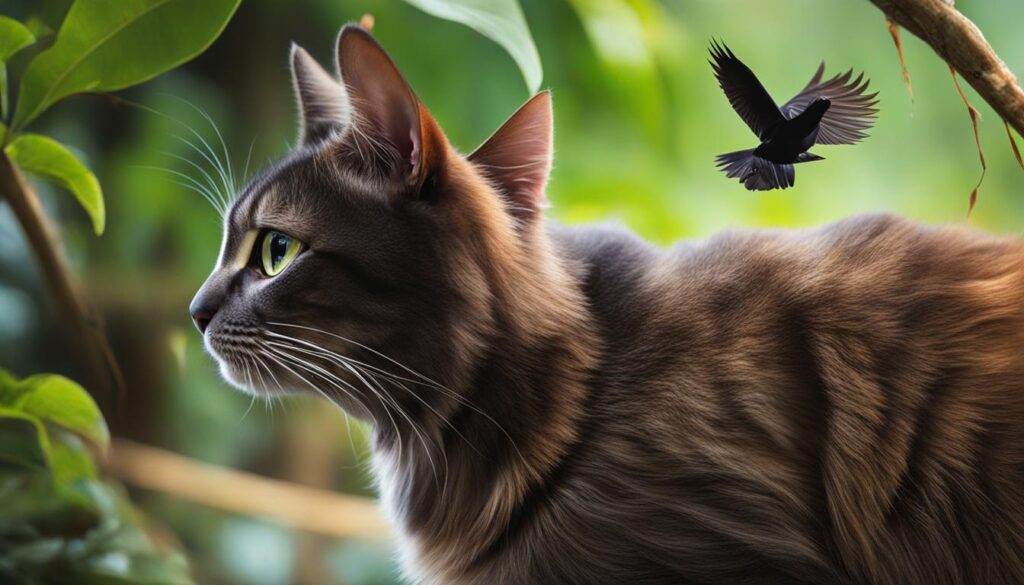
Conclusion
After delving into the fascinating world of the cat’s righting reflex, it becomes clear that their aerial acrobatics are no accident. It is a well-calculated display of physics, physiology, and evolution working in harmony. From their unique skeletal structure to their innate ability to twist and land on their feet, cats have honed their mid-air prowess to an art form.
Factors such as the height of their fall, the speed of their righting reflex, and the presence of their tail all play crucial roles in their ability to avoid injury. While cats are remarkable in their agility, it’s important to remember that falls can still pose risks, especially for older or weakened felines. Providing a safe environment and keeping a close eye on their well-being can help prevent accidents.
Studying the cat’s righting reflex also sheds light on the broader world of animal acrobatics. From squirrels to reptiles, many creatures possess similar abilities, each with their own unique adaptations. By understanding the mechanics and evolutionary origins of these reflexes in different species, researchers gain a deeper appreciation for the wonders of nature.
So, the next time you witness your feline friend executing a perfect mid-air twist, marvel at the intricate interplay of physics and biology. The cat’s righting reflex is a true testament to their remarkable abilities and reminds us of the beauty and complexity of the natural world.
FAQ
How does a cat land on its feet when it falls?
Cats have a unique skeletal structure and an innate aerial righting reflex that enables them to twist and land with grace and style. Their flexible backbone, lack of collarbone, and light bone structure allow them to rotate their bodies mid-air and soften the force of the fall. The cat’s inner ear and balance also play a crucial role in the righting reflex.
Is the righting reflex only found in cats?
No, the righting reflex can be found in other arboreal animals that live in trees. Cats, being natural climbers, have evolved to develop an exceptional aptitude for surviving falls.
Can cats of all ages execute the righting reflex?
Older cats or cats with weakened physical condition may have a less effective righting reflex and a reduced ability to correct their position in mid-air. This can make them more susceptible to injuries or less successful in landing on their feet.
How is the cat’s tail involved in the righting reflex?
The cat’s tail acts as a counterbalance and helps the cat to maintain stability and control during the fall. By using their tail to adjust their body position and increase air resistance, cats can effectively control their descent and reduce the impact of the landing.
What is the physics principle behind the cat’s mid-air acrobatics?
The cat’s ability to spin in the air during a fall is a result of the conservation of angular momentum. By using its tail as a propeller, the cat can maintain its angular momentum and execute a controlled twist to land on its feet.
Are there other animals with a similar righting reflex?
Yes, many other animals, especially those that live in trees or have arboreal habitats, possess similar reflexes that enable them to reorient their bodies in mid-air. This includes animals like squirrels, flying squirrels, and some reptiles.

